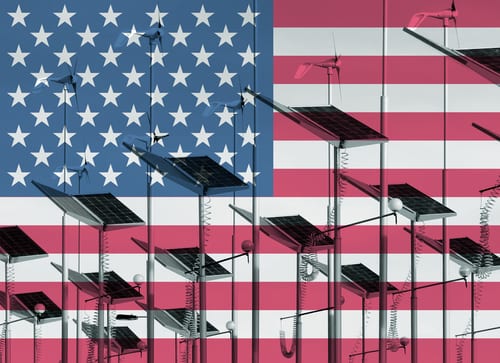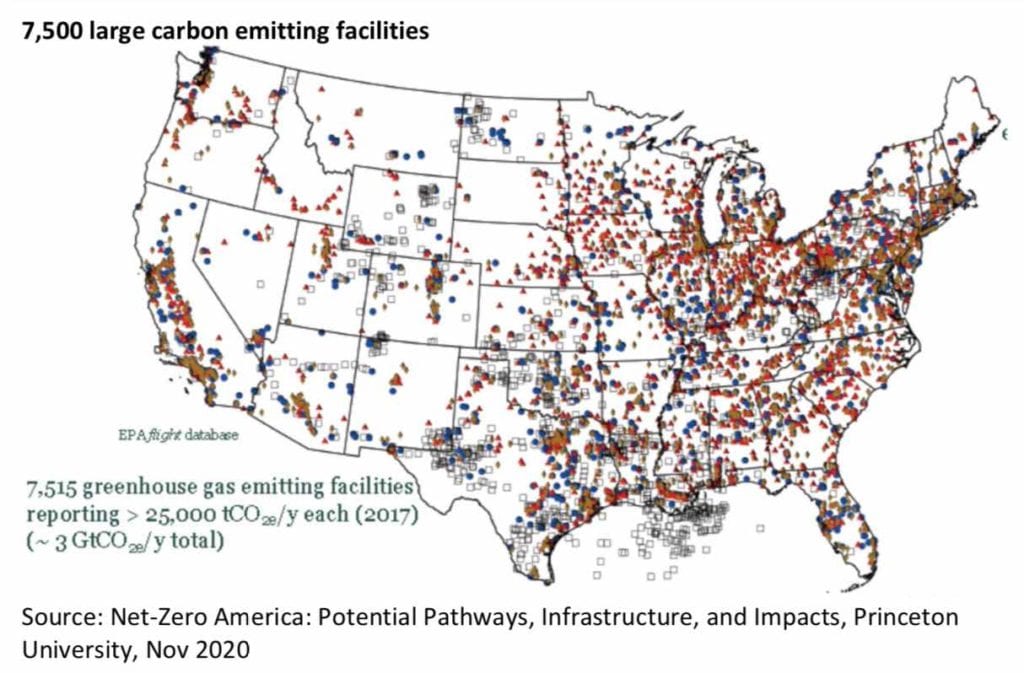EEnergy Informer
At last count, countries representing over 70% of the global GDP have pledged to cut their emissions to net-zero by 2050 or thereabouts. With the Biden Administration sworn in, the US is back among the ardent supporters of the Paris Accord with its own ambitious plans to curb its emissions.
No one doubts that it can be done, the question is how soon and at what cost?
Released in mid-Nov 2020 just in time to answer these questions, Net-Zero America: Potential Pathways, Infrastructure, and Impacts, a massive study by the Princeton University notes that “A growing number of pledges are being made by major corporations, municipalities, states, and national governments to reach net-zero emissions by 2050 or sooner,” adding, “This study provides granular guidance on what getting to net-zero really requires and on actions needed to translate these pledges into tangible progress.”
The study examines “… five different technologically and economically plausible energy-system pathways for the US to reach net- zero emissions by 2050” including detailed sector-by-sector results including temporal and “spatial distribution of changes in energy infrastructure, capital investment, employment, air pollution, land use, and other key outcomes at a state and local level.” It says, emphasis added,
“We find that each net-zero pathway results in a net increase in energy-sector employment and delivers significant reductions in air pollution, leading to public health benefits that begin immediately in the first decade of the transition.
The study also concludes that a successful net- zero transition could be accomplished with annual spending on energy that is comparable or lower as a percentage of GDP to what the nation spends annually on energy today.”
To achieve the lowest-cost outcomes, however, requires “foresight and proactive policy and action,” ingredients totally lacking during the Trump Administration – you won’t find this in the report. It says,
“Building a net-zero America will require immediate, large-scale mobilization of capital, policy and societal commitment, including at least $2.5 trillion in additional capital investment into energy supply, industry, buildings, and vehicles over the next decade relative to business as usual.”
It adds, “Consumers will pay back this upfront investment over decades, making the transition affordable (total annualized US energy expenditures would increase by less than 3% over 2021-2030), but major investment decisions must start now, with levels of investments ramping up throughout the transition.”
The study examines 6 major pillars of transition to net zero in what can only be described as excruciating detail:
End-use energy efficiency & electrification;
Clean electricity: Wind & solar plus transmission & investments in firm power; Bio-energy & other zero-carbon fuels & feedstock;
CO2 capture, utilization & storage;
Reduced non-CO2 emissions; and
Enhanced land sinks.
Clearly a lot is at stake and not getting it right could have devastating consequences. Just think of how the Covid pandemic was mishandled in the US in 2020 with 400,000 already dead.
Fereidoon P. Sioshansi, PHD, is Editor & publisher, EEnergy Informer, and president, Menlo Energy Economics
This story was originally published on EEnergy Informa. Reproduced with permission.












